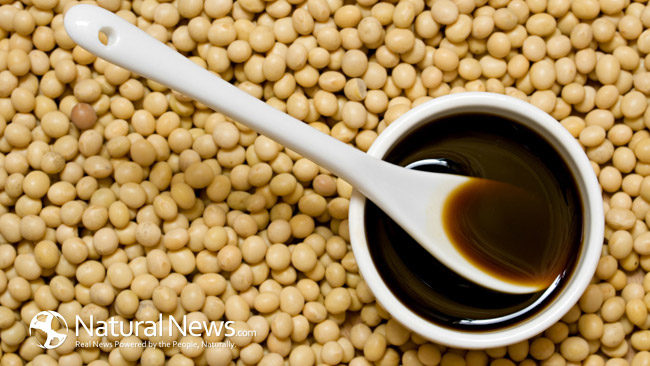MSG is a popular flavor enhancer, originally used as an addition to Asian food, but these days found in thousands of foods we consume on a daily basis. MSG is an excitotoxin (or neurotoxin), meaning that it overexcites your cells which can cause damage, or even cell death.
What Exactly Is MSG?
MSG was first identified as a natural flavor enhancer in seaweed. Later they made a man-made version of it that hit the food market. It consists out of almost 80% free glutamic acid and 20% sodium.
The weird thing is, although it is used as a flavor enhancer, MSG has very little taste. What it actually does is tricking your taste buds and brain in believing you are eating food with more protein and savory taste than it actually has. So glutamic acid works as a nerve stimulant to make the most disgusting food taste great.
In the sixties MSG was considered safe by the FDA and it has been used in thousands of foods ever since. Even in many of the “Health” foods we know. It gave rise to the so called “Chinese Restaurant Syndrome” or “MSG Symptom Complex”, with widespread reported side effects going from numbness and brain fog to heart palpitations and brain damage.
The Dangers Of MSG
While natural glutamic acid occurs in protein-rich foods such as grains, meat, dairy, and even in some vegetables, they are released in small concentrations amongst other amino acids and our body can process and eliminate them through your liver quite easily without causing a toxic reaction.
Many processed food however contain processed proteins. When proteins are processed or hydrolyzed, MSG or free glutamic acid is formed as a byproduct. Even the vegetable proteins, found in veggie burgers and other health foods, are hydrolyzed and contain MSG. And these hydrolyzed versions don’t require labeling as pure MSG was not added.
So even if you have heard about the danger of MSG and are reading your food labels, it may be not enough to look for MSG or glutamic acid. It has so many other sneaky names and is lurking in more foods than you could imagine (see list below).
Health Risks Of MSG Include:
- Nerve cell and brain damage
- Weight gain and obesity
- Promotes liver inflammation and dysplasia
- Eye Damage
- Headaches
- Fatigue
- Brain fog
- Depression
- Numbness, tingling or burning sensations
- Chest pain and breathing issuea
- Heart palpitation
Tips To Keep MSG Out Of Your Diet
- Eliminate all processed food as much as possible. Stick to a fresh, whole food diet to avoid this danger toxin. Read all labels on packaged food or avoid them all together.
- Watch out when eating out. You could ask the waiter for MSG-free products or not to add MSG to your meal. But you’re only 100% sure to eat a MSG-free meal in your own kitchen.
- Watch out for sneaky hidden names of MSG. The FDA requires monosodium glutamate to be listed on the label, but the food industry doesn’t have to label products that contain free glutamic acid, which is MSG’s main component.
Here’s a list of ingredients that always contain MSG:
- Autolyzed yeast
- Yeast Extract
- Yeast Nutrient
- Monopotassium Glutamate
- Monosodium Glutamate
- Glutamic Acid
- Gelatin
- Textured Protein
- Hydrolyzed Protein
- Calcium Caseinate
- Sodium Caseinate
- Yeast food
Here’s a list of ingredients that often contain MSG or create MSG during processing:
- Flavor, flavorings, seasonings or all phrases containing one of these words
- Soy sauce
- Stock, broth
- Protease
- Carrageenan
- Malt extract
- Matlodextrin
- Worcestershire sauce
- Pectin
- Kombu extract
- Powdered milk
- Barley malt
- Enzymes
- Anything enzyme modified
- Corn starch
- Soy Protein or soy protein isolate
- Anything ultra-pasteurized
- Anything protein fortified
FYI: Vitamin C and Ginger Root Extract
Make sure you get enough vitamin C or use ginger extract. Both have shown some great protective effects against MSG.
Avoiding or eliminating processed or packaged foods all the time can be hard and time consuming. So if you eat processed foods make sure to read the labels and be on the lookout for these many sneaky hidden names of MSG.
Opting for fresh, whole foods will give you enough flavor without the need of tricking your brain into believing you are eating something delicious and will improve your overall health.
If you are serious about losing weight and/or eating a fresh, whole food diet without feeling hungry and counting calories, click here
Don’t forget to download my FREE green smoothie eBook or connect with me on Facebook or Google+ for more healthy tips, tricks, and recipes.
Scientific Studies:
- Effect of systemic monosodium glutamate (MSG) on headache and pericranial muscle sensitivity
- Monosodium glutamate (MSG): a villain and promoter of liver inflammation and dysplasia
- Association of monosodium glutamate intake with overweight in Chinese adults: the INTERMAP Study
- Neuroprotective evaluation of extract of ginger (Zingiber officinale) root in monosodium glutamate induced toxicity in different brain areas male albino rats.





